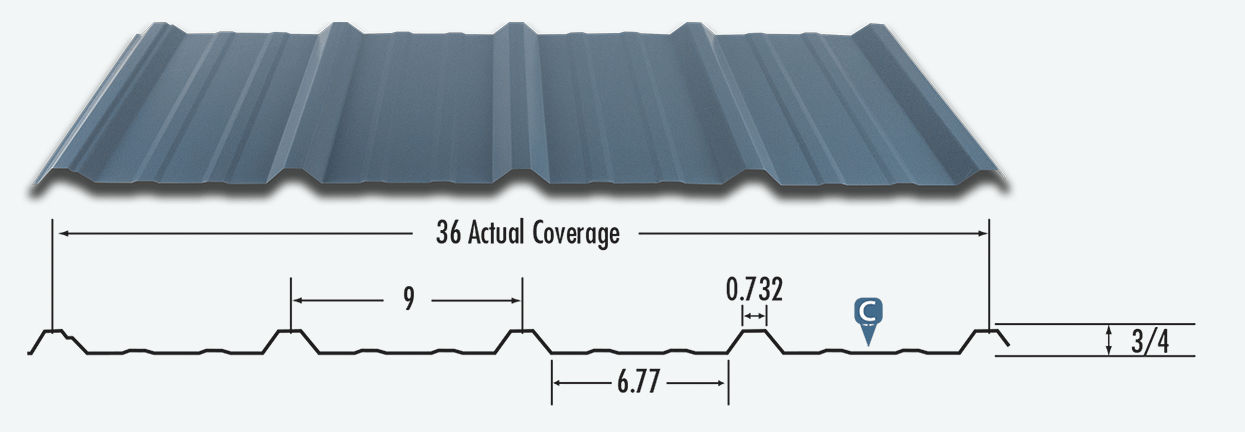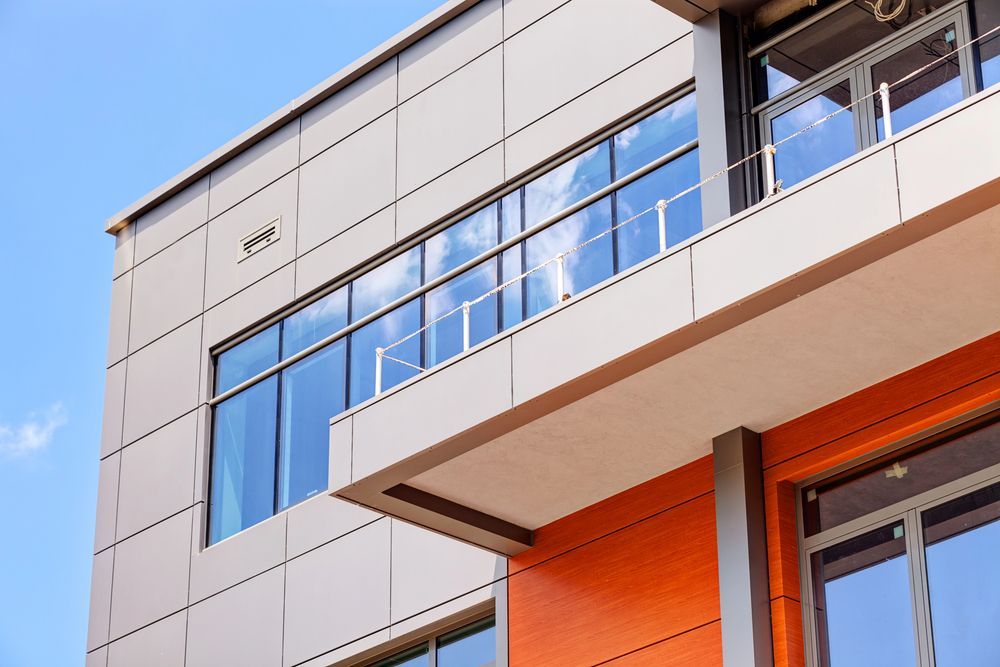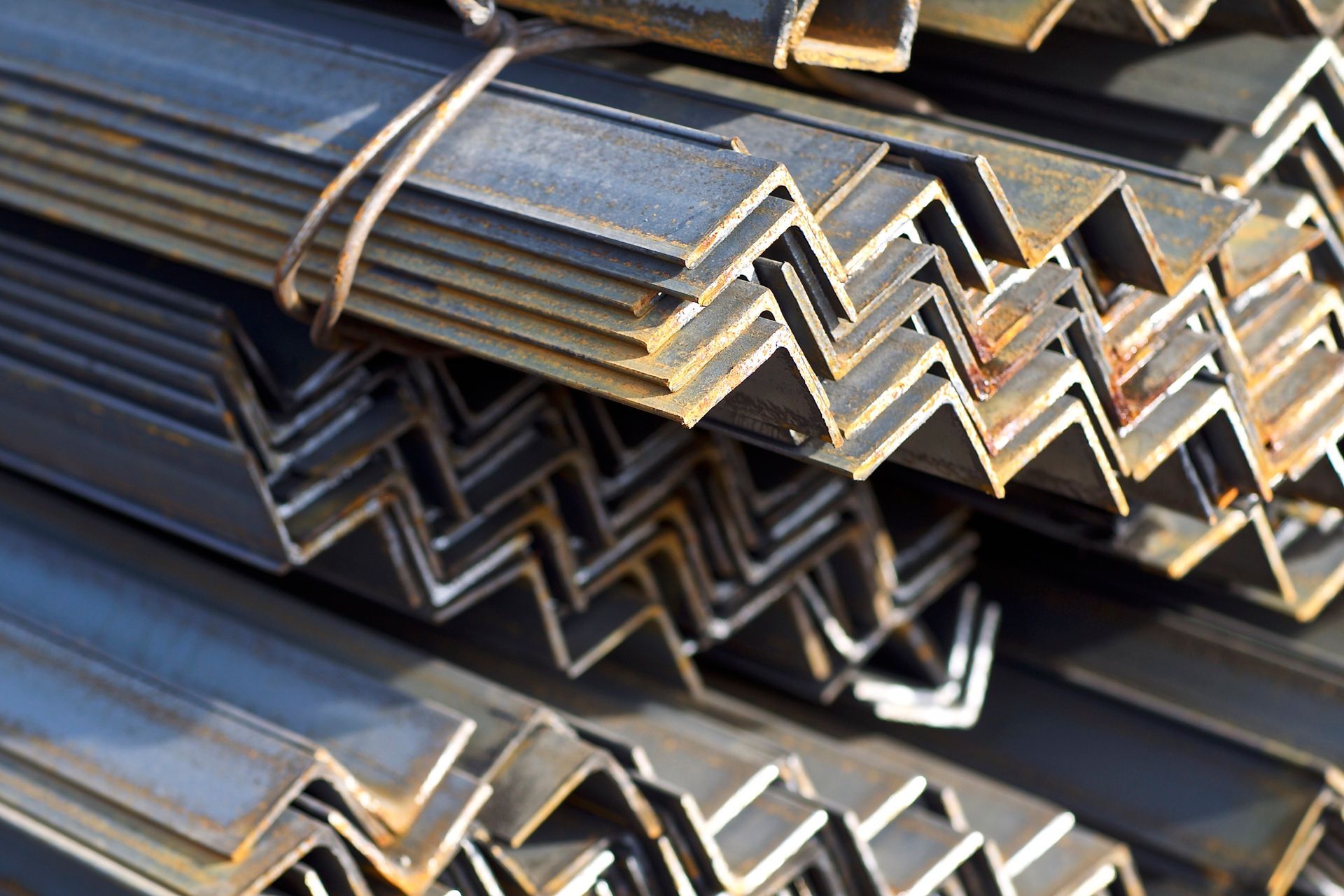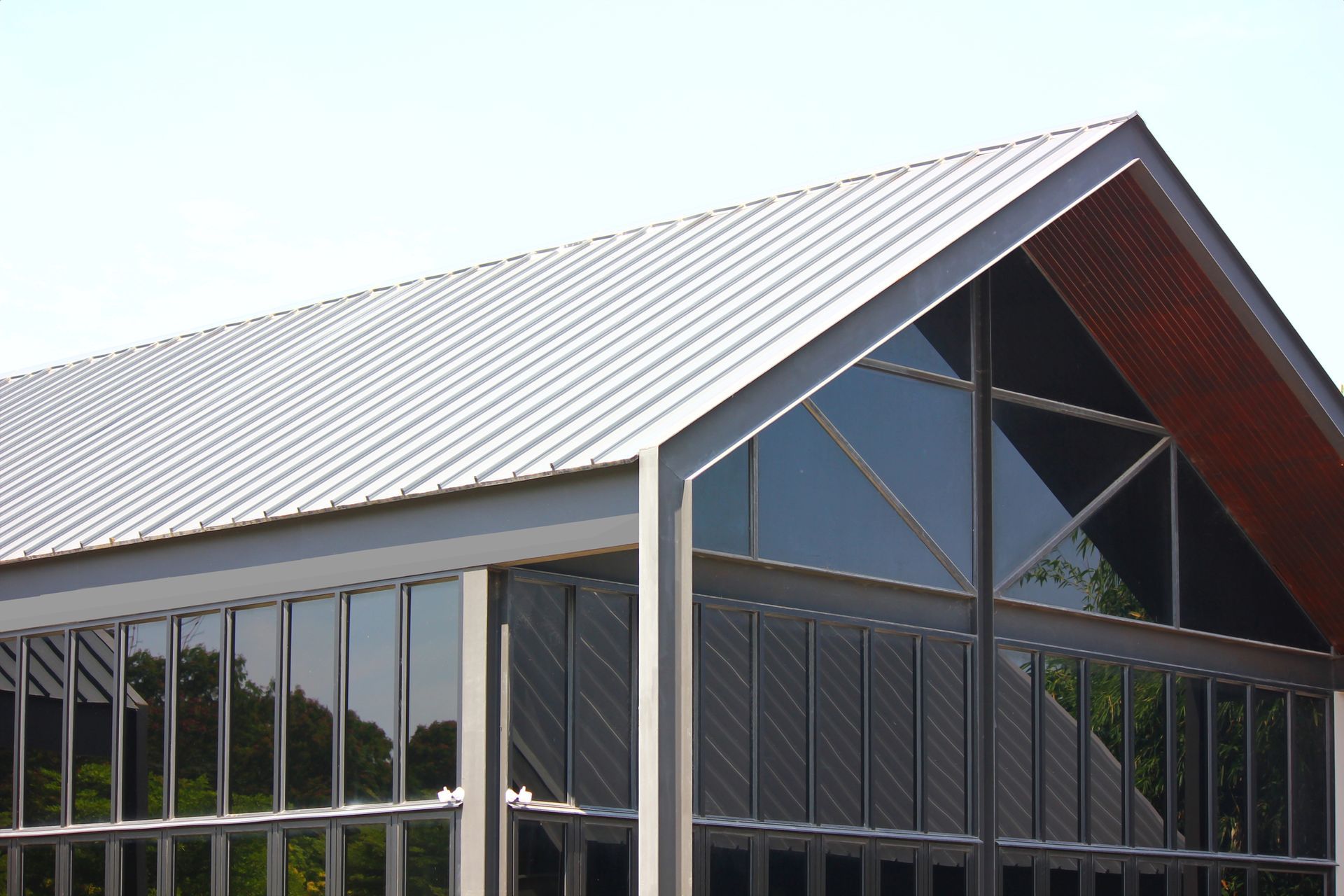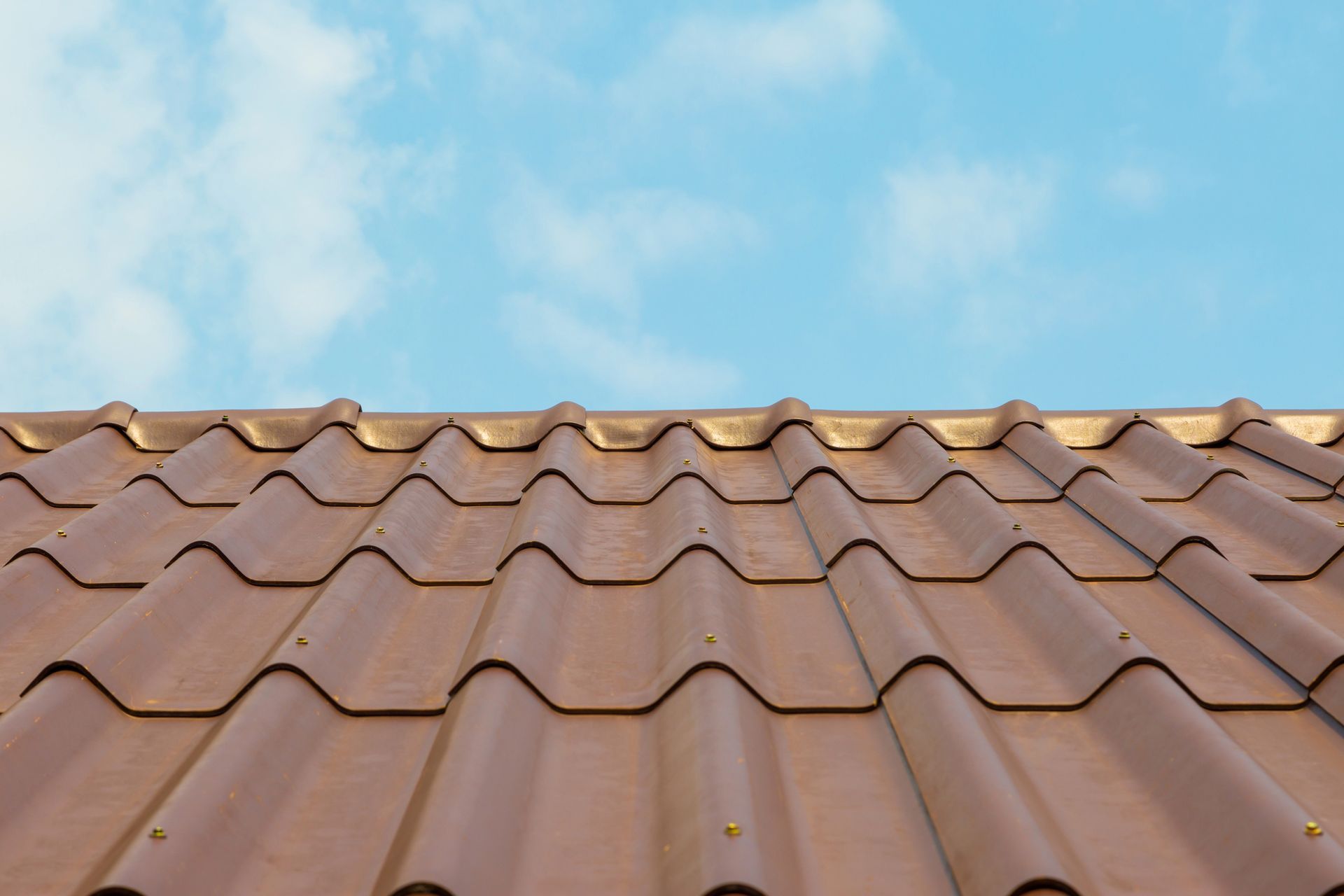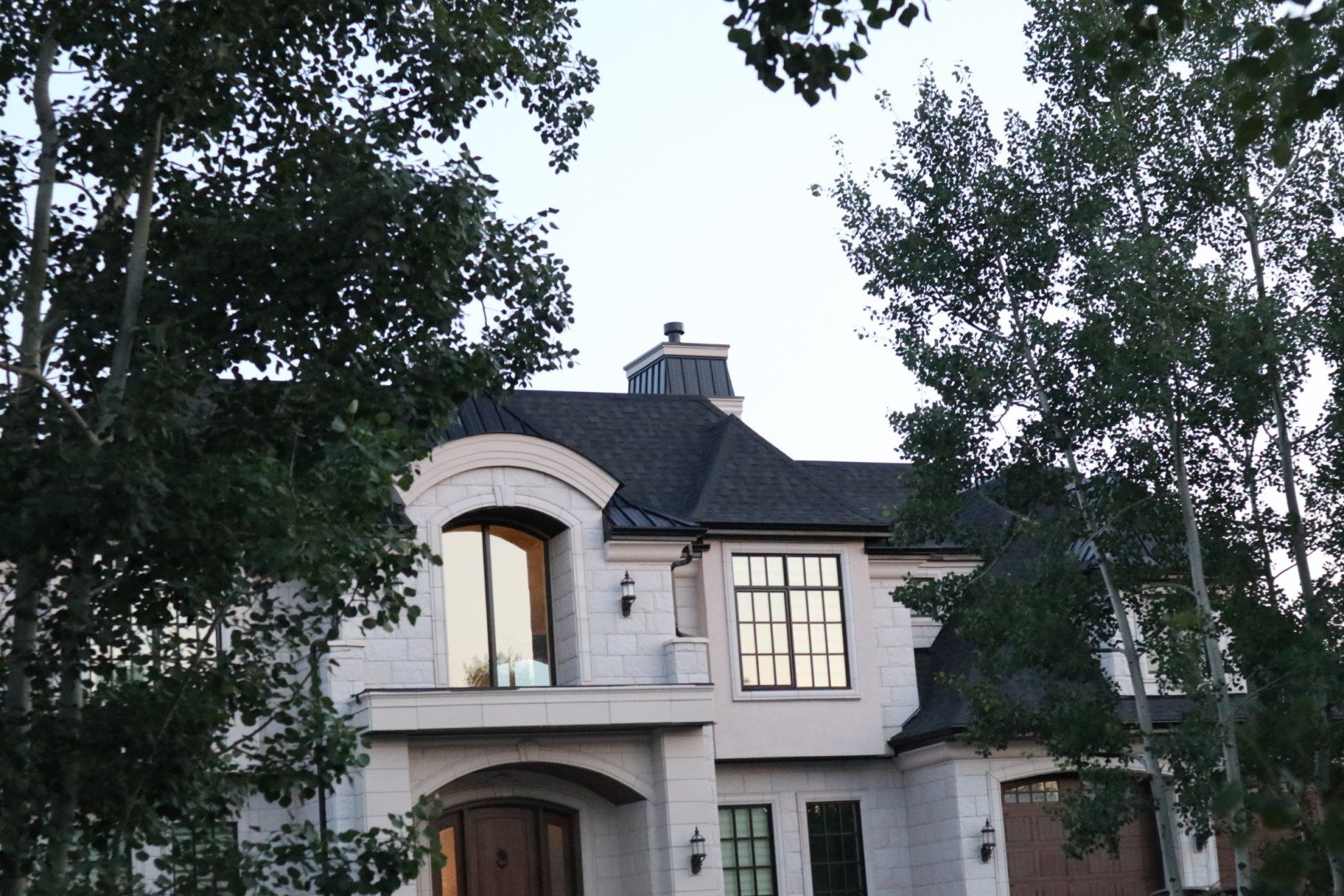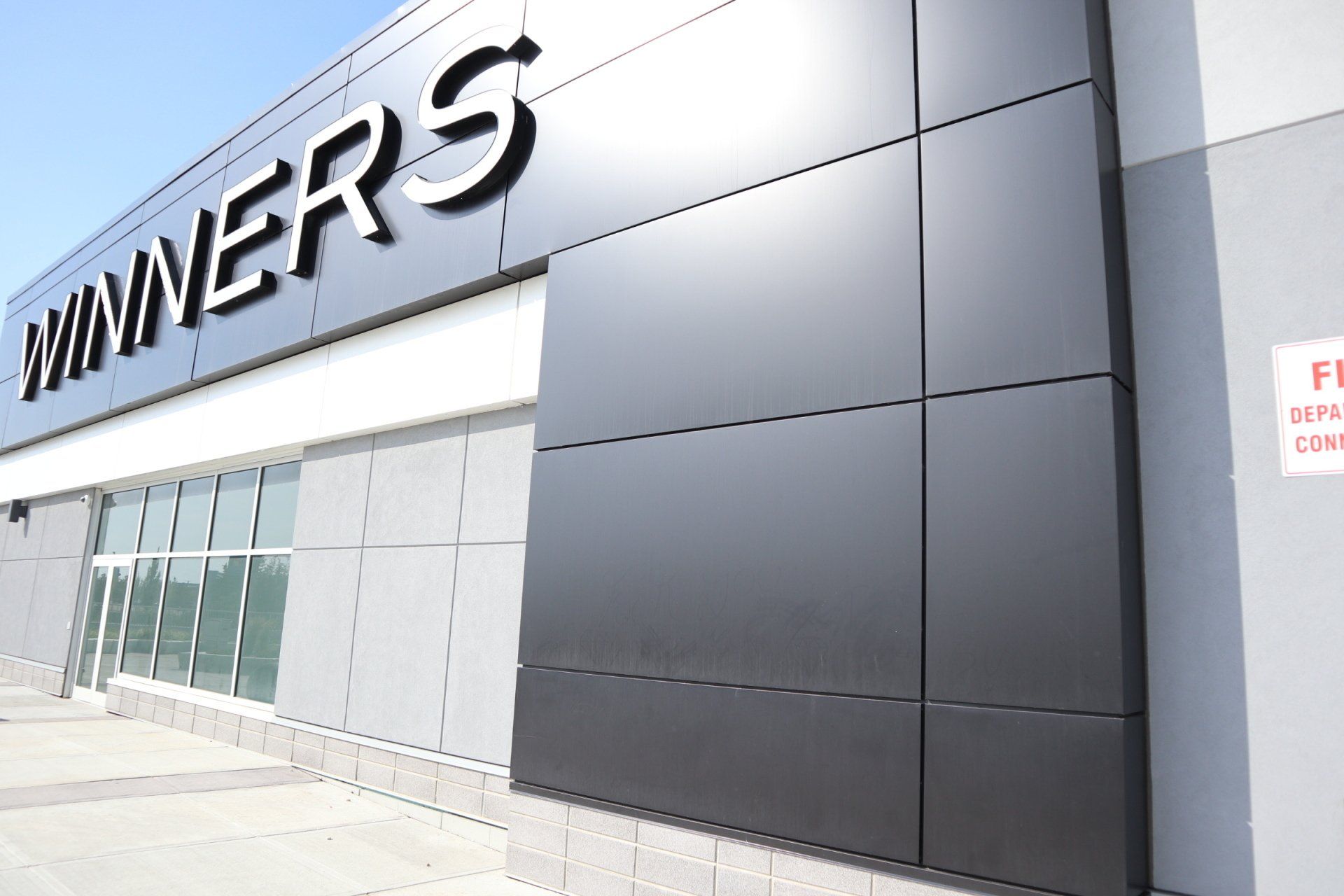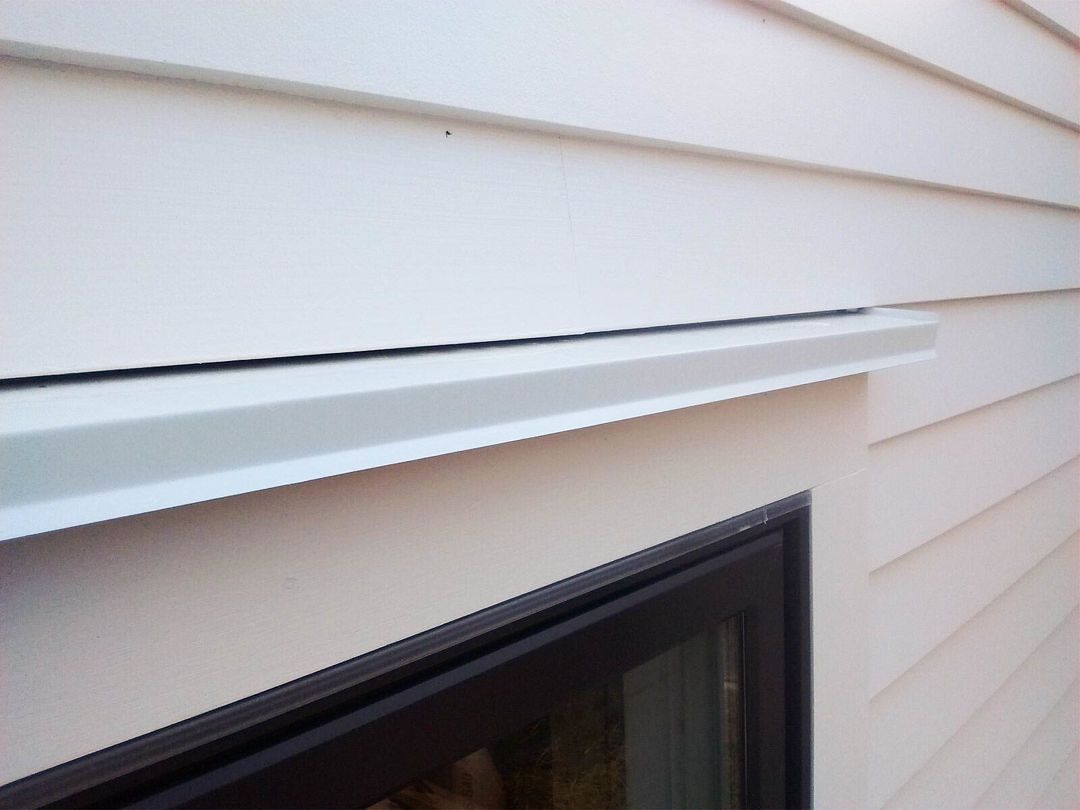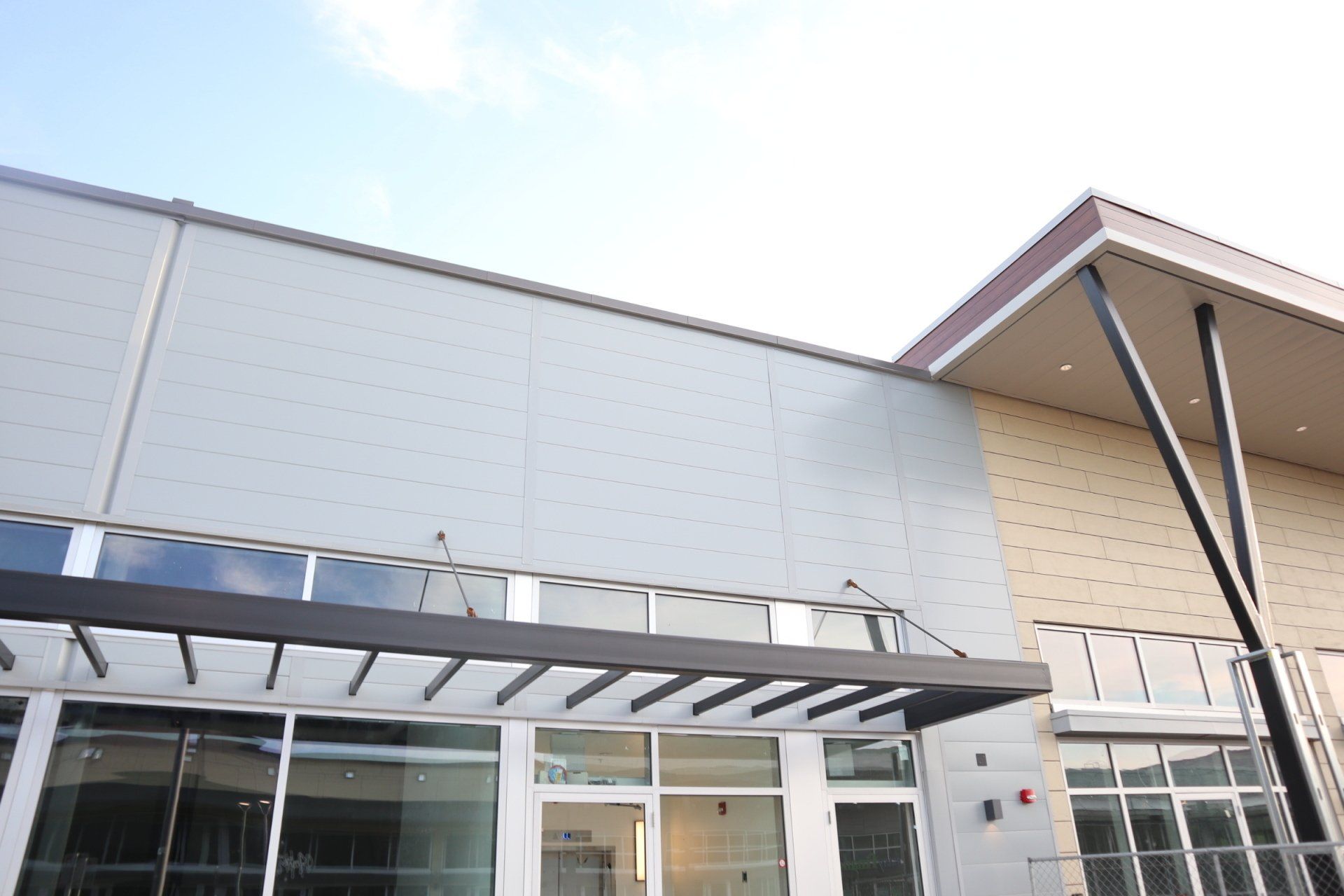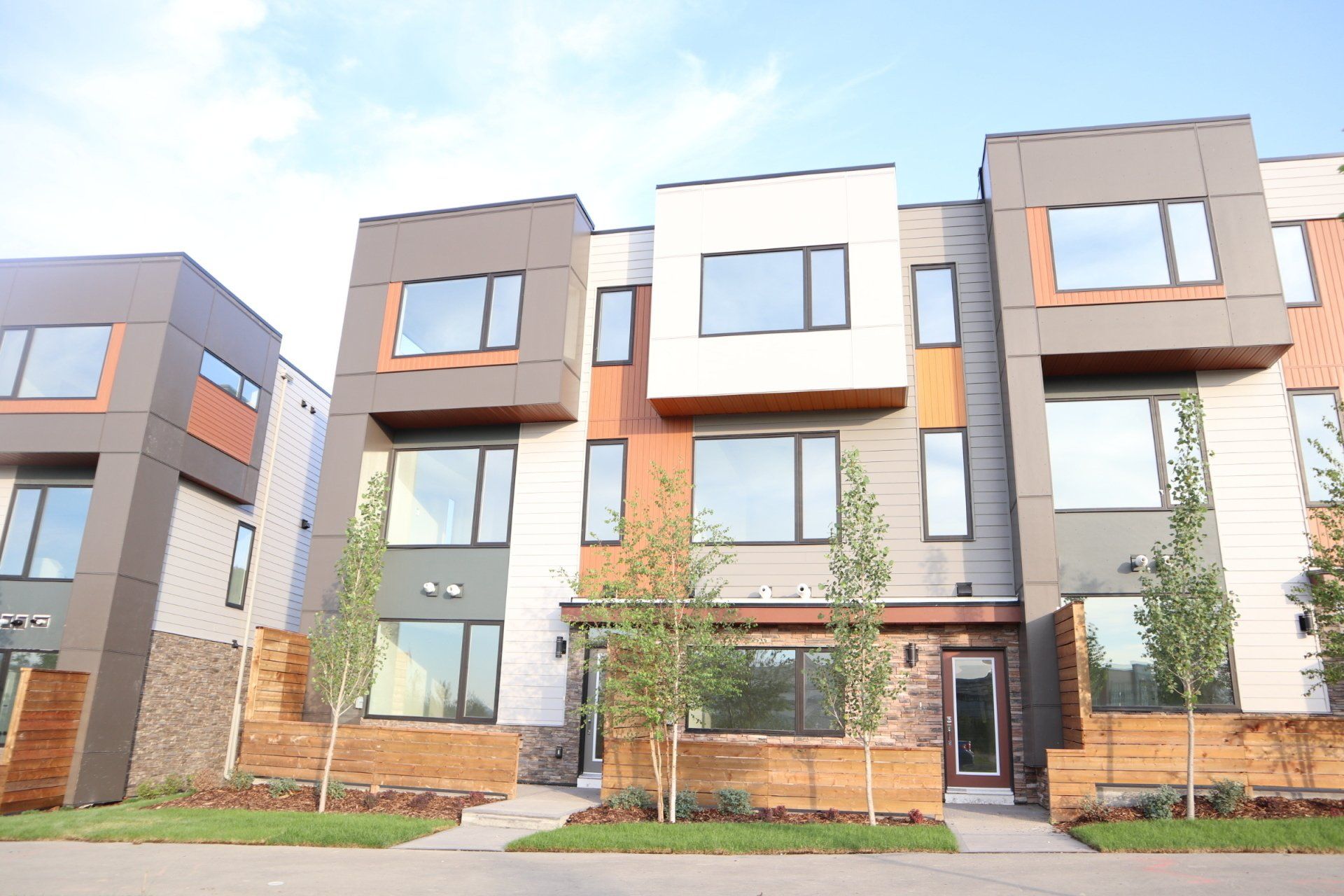Aluminum Composite Panels vs. Traditional Building Materials: A Comparative Analysis
From the budget-friendly and lightweight Polyethylene (PE) Core used for signage and interiors to the mineral-based cores used for high-fire-rated applications like airports and tunnels, ACPs are a must-have in modern construction.
Read on to discover the difference between ACPs and traditional materials and why they matter.
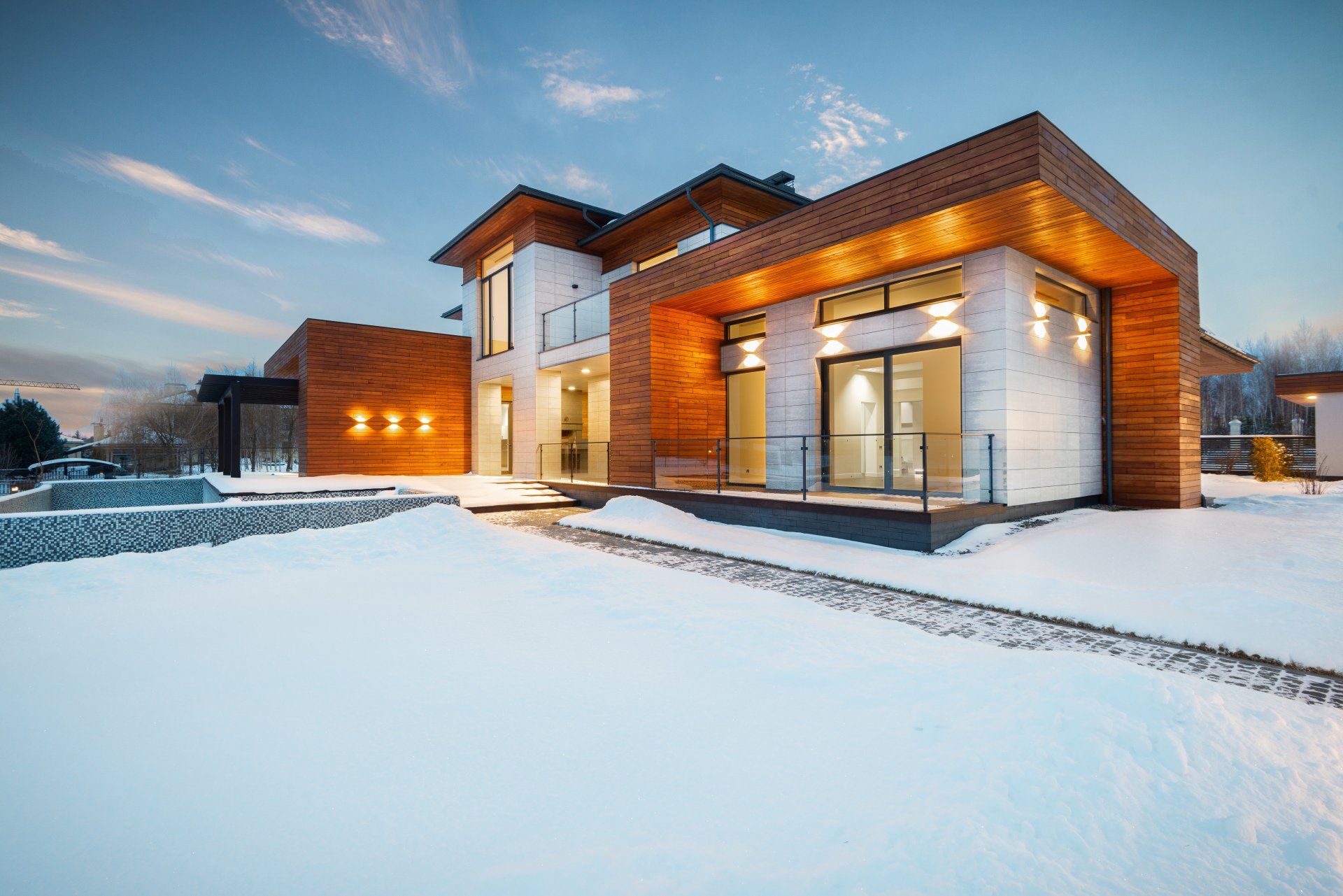
Understanding Aluminum Composite Panels
Aluminum Composite Panels (ACMs) are aluminum sheets bonded to a non-aluminum core. The sheets can be as thin as 0.2 mm or as thick as 0.5 mm, but the core, which is 2 mm to 6 mm thick, determines the strength, fire rating, and insulation.
Polyethylene (PE) Core
PE is affordable and lightweight. Because it contains low-density polyethylene, it’s highly flammable and suitable for applications like signage and interior decoration where a fire rating is not critical.
Fire Retardant (FR) Core
Fire retardant additives like magnesium or aluminum hydroxide reduce flammability and smoke emissions. This material is for environments with strict fire safety regulations, such as hospitals and high-rise buildings.
Mineral Core
Mineral core ACP has non-combustible minerals like magnesium oxide or aluminum hydroxide. It has a superior fire rating and thermal insulation. The core bonds to the aluminum sheets with a high-temperature-resistant adhesive. This type of ACP is for high-fire-rated applications like airports, facade cladding, and tunnels.
Aluminum Honeycomb Core
Aluminum honeycomb core ACP has hexagonal cells made of aluminum foil bonded together. It’s lightweight and strong, and its core contains non-combustible minerals like magnesium oxide or aluminum hydroxide. It has a high fire rating and thermal insulation, making it ideal for applications that require high mechanical strength, such as the marine, aerospace, and transportation industries.
Polystyrene (PS) Core
Polystyrene core ACP has expanded polystyrene foam bonded to aluminum sheets, making it lightweight and thermally insulated. This type of ACP is common for insulation needs in sound barriers, cold rooms, and refrigeration trucks.
Traditional Building Materials
Steel, wood and solid aluminum are traditional materials with strength, aesthetics, insulation, and corrosion resistance. Each has its pros and cons:
Steel
Made from iron and carbon, steel has high tensile strength and can carry heavy loads without buckling. It’s common for structural frameworks, beams, columns, and even reinforced concrete. You can also find steel in skyscrapers, bridges, residential homes, and industrial warehouses.
Steel is strong, lasts for years, and is recyclable and fire-resistant. But it can rust if not protected, is more expensive than others, and requires a solid foundation.
Wood
Construction sites use different types of wood, from softwoods like pine and cedar to hardwoods like oak and maple to engineered materials like plywood, OSB (oriented strand board) and MDF (medium-density fibreboard).
Wood is eco-friendly and renewable, making it a sustainable construction option. It adds natural beauty to architectural designs and has good thermal insulation that can reduce heating and cooling costs. Wood needs regular maintenance, like sealing and painting, to protect against moisture, pests, and decay. It’s flammable and may need fire retardant treatment for specific applications.
Solid Aluminum
Solid aluminum is lightweight and corrosion-resistant, perfect for outdoor use. It’s easy to work with, and architects love it for its modern look. Builders often use it for cladding buildings, window frames, and even fancy interior design elements.
Solid aluminum is super durable, won’t rust, and is recyclable, so it's better for the environment. It’s also a bit pricey and doesn’t insulate like others, so you might need extra insulation to keep your building warm.
Durability and Lifespan Comparison
Knowing the strengths and weaknesses of different building materials will guide your construction decisions.
Aluminum Composite Panels (ACPs):
ACPs are very durable and last 40–50 years or more with proper maintenance. They withstand weather, corrosion, and UV radiation. The quality of core material, proper installation, environmental exposure, and regular maintenance play a big role in this. Using high-quality cores, like fire-retardant ones, will boost durability.
Steel
Steel structures can last 50–100 years or more if well maintained. Corrosion is the primary concern, especially in humid or salty areas. Quality protective coatings and regular maintenance are key, so consider galvanizing, painting, or coating to extend steel’s lifespan.
Wood
Wood’s lifespan varies from 20 years to over 100, depending on type and treatment. Treated hardwoods and engineered wood can be very durable. However, wood is prone to rot, insects, moisture, and fire. The type of wood, quality of treatment, maintenance, proper sealing, painting, and pest control measures can enhance durability.
Solid Aluminum
Solid aluminum is durable, lasting 40–80 years. But, environmental exposure, especially in marine or industrial settings, the quality of the alloys used, and regular maintenance can affect its durability. Regular cleaning and inspection can also maintain the aluminum’s integrity and appearance.
Weight and Ease of Installation
ACP’s lightweight nature makes the installation process much easier and faster than traditional heavy materials like steel and solid aluminum. This means lower labour requirements and costs, making ACP a practical option for many construction projects. Wood is variable in weight and between ACP and steel in terms of handling and installation speed.
Cost and Maintenance
Consider initial cost and long-term maintenance when choosing construction materials.
| Aluminum Composite Panels (ACPs) | Steel | Wood | Solid Aluminum |
|---|---|---|---|
| ACPs are cheaper than solid aluminum and steel, though they can be more expensive than some types of wood, particularly untreated softwoods. | Steel is usually more expensive upfront than ACPs and wood, but its exceptional strength and durability might justify the higher price for specific projects. | Wood, especially softwoods, can be less expensive than ACPs, but high-quality hardwoods and treated woods can be on par with or even exceed the cost of ACPs. | Solid aluminum is the most expensive option among these materials, primarily due to its high material cost and processing expenses. |
| Low maintenance requirements and costs. | High maintenance needs and costs, primarily for corrosion prevention. | Moderate to high maintenance needs and costs, depending on the type and treatment. | Low to moderate maintenance needs and costs. |
Aesthetic Flexibility
Each construction material has its own design options and finishes that can enhance your project’s look. ACPs come in various colours, textures, and finishes, including metallic, matte, and gloss, as well as natural-looking imitations like wood and stone. Their versatility makes them the go-to for modern facades, commercial interiors, and signage.
You can finish steel with galvanizing, painting, and powder coating, making it great for high-rise buildings, industrial structures, and modern residential designs.
Wood has natural beauty, with various grains, colours, and textures from different species. You’ll often find it in traditional and contemporary architecture as flooring, wall panels, and furniture.
Solid aluminum is modern and can be anodized, painted, or polished — perfect for building cladding, window frames, and decorative panels.
Environmental Impact
Let’s take a closer look at the sustainability and eco-friendliness along with insulation properties and heating and cooling costs of each of these materials:
Aluminum Composite Panels (ACPs)
- Pros: ACPs are recyclable; some manufacturers use recycled aluminum. They’re also long-lasting, so less replacement is necessary.
- Cons: Producing ACPs can be energy intensive and may use non-renewable resources. Core materials, if not recyclable, can be a disposal challenge.
- Production: ACPs have excellent thermal insulation, reducing heating and cooling costs.
- Disposal: There are efforts in place to improve the recyclability of its core materials and promote recycling programs.
- Insulation properties: ACPs have good thermal insulation. The air gap between aluminum layers helps in energy efficiency.
- Impact on heat/cool cost: Buildings with ACPs have lower energy costs because of their insulation properties and better temperature regulation.
Steel
- Pros: Steel is highly recyclable; a significant portion of new steel comes from recycled materials. It’s durable, so less replacement is needed.
- Cons: Steel production is energy intensive and contributes to CO2 emissions. Mining for iron ore has a negative environmental impact.
- Production: The steel industry is working to reduce energy use and emissions by adopting new technologies and using scrap steel.
- Disposal: Steel is widely recycled, a big plus for the environment.
- Insulation properties: Steel doesn’t have thermal insulation but can be combined with insulating materials to improve energy efficiency.
- Impact on heat/cool cost: Uninsulated steel structures may produce higher heating and cooling costs.
Wood
- Pros: Wood is a renewable resource; when sourced sustainably, it’s eco-friendly. It absorbs carbon as it grows.
- Cons: Deforestation and unsustainable logging can harm habitats and biodiversity, and the wood treatment process often contains environmentally harmful chemicals.
- Production: Sustainable forestry practices and FSC certification ensures responsible sourcing.
- Disposal: Wood can be reused, recycled into other products, or composted, reducing waste.
- Insulation properties: Wood naturally insulates well and provides thermal resistance that helps in the energy efficiency of buildings.
- Impact on heat/cool cost: Wood structures have lower heating and cooling costs due to their insulation properties.
Solid Aluminum
- Pros: Aluminum is highly recyclable and can be reused multiple times without losing quality. Producing recycled aluminum uses much less energy than new aluminum.
- Cons: Extracting and processing aluminum is energy-intensive and can cause environmental damage.
- Production: Using recycled aluminum is increasing, reducing the production energy needed.
- Disposal: Aluminum has a well-established recycling infrastructure and is easily recyclable, so disposal is environmentally friendly.
- Insulation properties: Solid aluminum, like steel, has poor insulation but can be improved with insulation materials.
- Impact on heat/cool cost: Buildings with solid aluminum typically require additional insulation to manage heating and cooling costs better.
Build the Future with ACPs
ACPs are popular in modern construction because they’re versatile, light, and budget-friendly. They offer enhanced thermal insulation, helping lower energy bills and steady building temperatures.
Available in various designs — from metallic and matte finishes to wood and stone looks — ACPs fit any style. Low-maintenance and built to last, they’re perfect for many construction needs.
